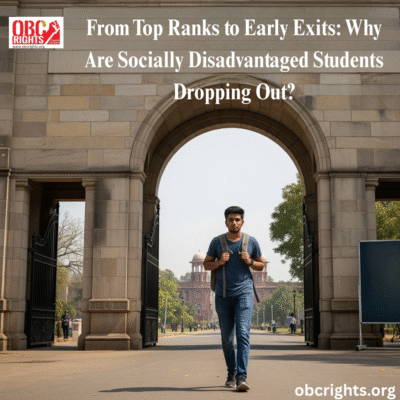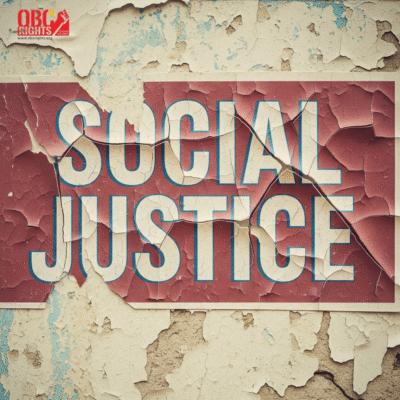In the competitive landscape of Indian education, clearing the IIT entrance exam is considered the ultimate badge of merit. For thousands of students from Other Backward Classes (OBC), Scheduled Castes (SC), and Scheduled Tribes (ST), securing a seat is not just an academic victory — it’s a triumph over historical barriers, systemic exclusion, and generational disadvantage.
Yet, behind this success story lies a troubling, shocking revelation. Many of these students, who enter with unmatched determination, are quietly Dropping Out before completing their degrees. And they are leaving in alarmingly disproportionate numbers.
The Numbers That Should Alarm Us
Parliamentary data paints a stark picture. 63% of all undergraduate dropouts from the top seven IITs during the previous five years were from reserved categories. The disparities at some campuses are even more striking:
- IIT Guwahati: 88% of the students who dropped out belonged to SC, ST, and OBC communities.
- 76% dropouts in IIT Delhi
- IIT Kharagpur: 79 total undergraduate dropouts, with more than 60% of them belonging to reserved categories.
- IIT Madras: 70% from socially disadvantaged groups
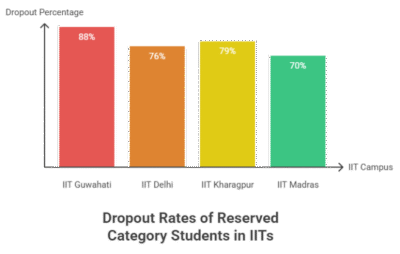
At certain points, entire dropout lists have been composed exclusively of SC, ST, and OBC students.
This isn’t a statistical quirk — it’s a systemic signal that India’s most prestigious campuses may not be providing the support that they need, moral support and encouragement.
Why Students Are Struggling — Beyond Academics
It’s easy to dismiss dropouts as a matter of personal capability, but the reality is far more complex. The hurdles start early:
- Delayed scholarships can force students into financial distress, leaving them to juggle studies and part-time work.
- Cultural isolation and subtle forms of discrimination can make campuses feel unwelcoming.
- Lack of mentorship means students from marginalized backgrounds are left to navigate unfamiliar academic and social environments alone.
- Mental health support gaps leave many without resources to cope with stress and anxiety.
In short, while the admission test rewards intellectual capability, the campus environment often demands social capital that disadvantaged students have historically been denied.
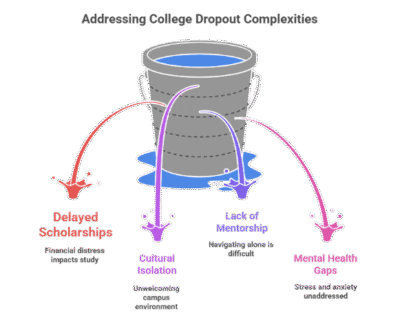
The Human Cost Behind the Statistics
Each dropout is more than a number on a spreadsheet. It’s a disrupted dream, a source of stigma, and a blow to both the individual and the community they represent. For many, the return home after leaving an IIT is accompanied by whispers of failure — even though the real failure lies in an institutional system that didn’t give them a fair shot at success.
Moving Beyond Tokenism
Elite institutions are quick to advertise diversity during admissions season. But diversity without retention is hollow.
What’s needed:
- Structured mentorship programs pairing senior students and faculty with newcomers from marginalized backgrounds.
- Timely scholarship disbursement to prevent financial distress.
- Proactive mental health services are designed to address the specific pressures faced by socially disadvantaged students.
- Cultural sensitivity training for faculty and staff to counter subtle biases.
- Continuous monitoring of retention data — not just admissions statistics — to identify red flags early.
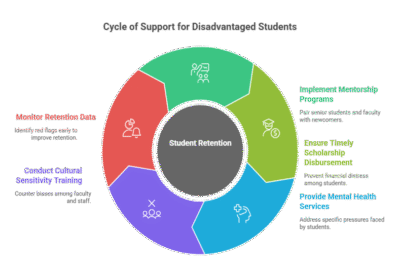
Why This Matters for India’s Future?
India’s IITs and other premier institutes are designed to nurture the nation’s brightest talent — not to push socially disadvantaged students back toward the very inequalities they struggled to overcome.
When a disproportionate number of SC, ST, and OBC students drop out, the impact goes far beyond individual setbacks. It represents a national loss: untapped potential, stalled innovation, and diminishing trust in a system that promised opportunity but delivered exclusion.
If these trends continue, the dream of higher education as a true equalizer will remain unfulfilled. For India to honor its constitutional vision of equality, inclusion cannot end at the admission gate — it must carry students through to graduation and beyond. Anything less is a promise broken

